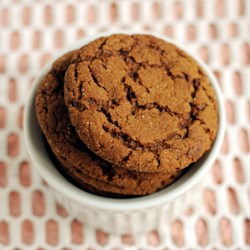The Amazing History of Spices-More than just food
Spices and herbs are what I’m all about.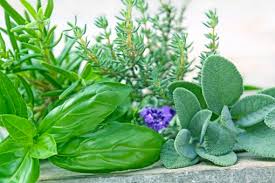
I love spices and herbs! I think they are fascinating, they are more than just food! They have so many qualities and they aren’t really treated with the respect that I think they deserve.
They flavor our food, making our mouth’s water, the aromas enticing appetites.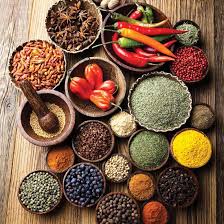 Spices and herbs have medicinal properties that have been used by ancient cultures for thousands of years. They can be used to alleviate many skin problems, and make you smell good. Spices and herbs, mixed in the proper proportions, can make you healthy from the inside out.
Spices and herbs have medicinal properties that have been used by ancient cultures for thousands of years. They can be used to alleviate many skin problems, and make you smell good. Spices and herbs, mixed in the proper proportions, can make you healthy from the inside out.
Herbs are easy to grow, you don’t need a garden, or a huge yard, herbs can be grown in any vessel that will hold dirt and water. Give them a little sunlight and you’re on your way to heavenly meals in minutes! You can grow them inside too!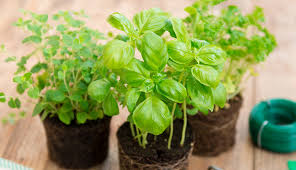
With this in mind, we should go back to how this wonderful vegetation started out as more than just food!
Spices Shaped Our History
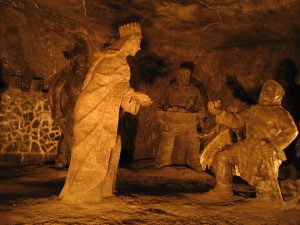 Spices basically molded human civilization. New worlds were discovered, empires were built and taken down, wars were won and lost, spices ruled different religious practices and beliefs. Bringing unexpected flavors to the new world, spices actually took a great part in molding civilization. Spices were among the most valuable items of trade in ancient and medieval times.
Spices basically molded human civilization. New worlds were discovered, empires were built and taken down, wars were won and lost, spices ruled different religious practices and beliefs. Bringing unexpected flavors to the new world, spices actually took a great part in molding civilization. Spices were among the most valuable items of trade in ancient and medieval times.
Before history was recorded, salt and spices were used by the ancient Egyptians to 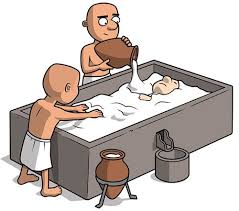 embalm their dead. Several Herbs and spices are referenced throughout the bible, they were even surmised to have been grown in the Garden of Eden. By 500 B.C.,
embalm their dead. Several Herbs and spices are referenced throughout the bible, they were even surmised to have been grown in the Garden of Eden. By 500 B.C.,
Chinese and Korean junk boats traded spices; not long thereafter, the Spice Route extended from Europe to Asia and eventually the Americas.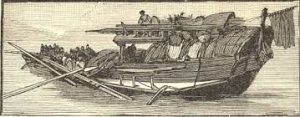
While Europe brooded during the Dark Ages, Indonesian, Arab, Chinese and Indian traders were busy profiting from their trading empires. Europe finally entered the spice trade during the Crusades, which strengthened the popularity of spices. In the 1600s, the Dutch formed the East India Company, which became one of 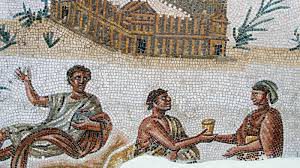 the most powerful trading companies in history.
the most powerful trading companies in history.
Spices were monopolized for centuries by the Middle East and North Africa who guarded them closely and became fabulously wealthy for it. Back then, spices weren’t used just for flavoring food, but also for such tasks as making perfume, embalming the dead, preserving meat and in traditional medicine. Europe stayed at the far end of the trading chain for spices,because they had no access to the eastern commerce.
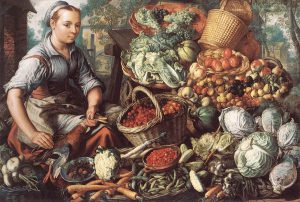 The colonial period was a frenzied time when all of Europe clamored for a piece of the spice trade. Europe tried using dubious and often brutal tactics to establish a foothold in India and Southeast Asia. Spain and Portugal spent much of the 16th century fighting over cloves, while England and the Dutch dueled over nutmeg in Indonesia.
The colonial period was a frenzied time when all of Europe clamored for a piece of the spice trade. Europe tried using dubious and often brutal tactics to establish a foothold in India and Southeast Asia. Spain and Portugal spent much of the 16th century fighting over cloves, while England and the Dutch dueled over nutmeg in Indonesia.
When sailing worldwide became possible, the kings and queens of Europe set out to change the balance of world trade by funding spice-hunting missions of their own.
Then America Was Discovered!
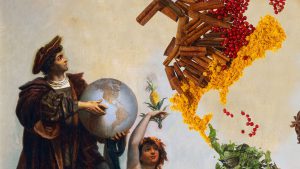 First came Christopher Columbus who, when searching for a faster route to India, bumped into the Americas instead. Disappointed he hadn’t reached India, Columbus’ name for the native people he encountered in America and their local version of a spicy condiment, “Indians” and “peppers” has stayed with us.
First came Christopher Columbus who, when searching for a faster route to India, bumped into the Americas instead. Disappointed he hadn’t reached India, Columbus’ name for the native people he encountered in America and their local version of a spicy condiment, “Indians” and “peppers” has stayed with us.
Also looking for spices, Vasco de Gama was the first to go around Africa, and a crew led by Ferdinand Magellan fully circled the globe. Manhattan was traded for some nutmeg.
All in all, spices really livened up the world!
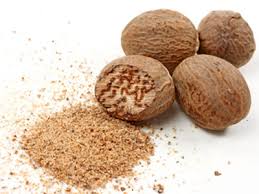 Jammed with nutmeg trees, a tiny island called Run, a small island in Indonesia, became the world’s most valuable real estate for a time in the 1600s. According to the Treaty of Westminster ending the First Anglo-Dutch War of 1652–1654, Run should have been returned to England. The first attempt in 1660 failed because of formal constraints by the Dutch; after the second attempt in 1665 the English traders were expelled in the same year. The Dutch destroyed the nutmeg trees.
Jammed with nutmeg trees, a tiny island called Run, a small island in Indonesia, became the world’s most valuable real estate for a time in the 1600s. According to the Treaty of Westminster ending the First Anglo-Dutch War of 1652–1654, Run should have been returned to England. The first attempt in 1660 failed because of formal constraints by the Dutch; after the second attempt in 1665 the English traders were expelled in the same year. The Dutch destroyed the nutmeg trees.
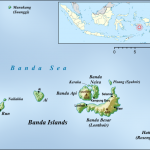 The Dutch monopoly on nutmeg and mace was destroyed by the transfer of nutmeg trees to Ceylon, Grenada, Singapore and other British colonies in 1817, after the capture of the main island, Bandalontor, in 1810 by Captain Cole, leading to the decline of the Dutch supremacy in the spice trade. There are, however, still nutmeg trees growing on Run today.
The Dutch monopoly on nutmeg and mace was destroyed by the transfer of nutmeg trees to Ceylon, Grenada, Singapore and other British colonies in 1817, after the capture of the main island, Bandalontor, in 1810 by Captain Cole, leading to the decline of the Dutch supremacy in the spice trade. There are, however, still nutmeg trees growing on Run today.
When England gave it up to The Netherlands in a treaty to end hostilities between the two nations. In exchange for Run, The Netherlands swapped a couple of colonies across the pond — including what is now known as the island of Manhattan.
After the Second Anglo-Dutch War of 1665–1667, England and the United Provinces of the Netherlands agreed in the Treaty of Breda to the status quo. The English would keep the island of Manhattan, thus renaming the city on that island from New Amsterdam to New York.
In return Run was formally abandoned to the Dutch. By that time, burgeoning European outposts already formed a ring around the Indian Ocean, bringing enormous wealth to their home countries and fuelling the colonization of any territory deemed suitable for crops. Flags were planted and ship paths formed a web of sorts across the world’s ocean like never before.
All in the pursuit of a more flavorful dinner, the world’s first crack at globalization had begun!
Common Herbs and Spices
We still use all of the original spices traded during the Middle Ages like black pepper, cumin, cinnamon, ginger, cloves, and nutmeg. Since then, we have discovered dozens of new spices, each with its own tradition.
Try a new recipe, check this one out, you’ll think you’re traveling on the spice route!
Soft Ginger Cookies
- Prep 15 min
- Cook 10 min
- Ready In 50 min
Ingredients
Dry Ingredients
- 2 1/4 cups all-purpose flour
- 2 teaspoons ground ginger
- 1 teaspoon baking soda
- 3/4 teaspoon ground cinnamon
- 1/2 teaspoon ground cloves
- 1/4 teaspoon salt
Wet Ingredients
- 3/4 cup butter, softened
- 1 cup white sugar
- 1 egg
- 1 tablespoon water
- 1/4 cup molasses
- 2 tablespoons white sugar
Directions
- Preheat oven to 350 degrees F (175 degrees C). Sift together the flour, ginger, baking soda, cinnamon, cloves, and salt. Set aside.
- In a large bowl, cream together the margarine and 1 cup sugar until light and fluffy. Beat in the egg, then stir in the water and molasses. Gradually stir the sifted ingredients into the molasses mixture. Shape dough into walnut sized balls, and roll them in the remaining 2 tablespoons of sugar. Place the cookies 2 inches apart onto an ungreased cookie sheet, and flatten slightly.
- Bake for 8 to 10 minutes in the preheated oven. Allow cookies to cool on baking sheet for 5 minutes before removing to a wire rack to cool completely. Store in an airtight container.
Please come back often as I will be telling more tales of spices and herbs and including more yummy recipes. Thanks for stopping by! Suggestions for more spicy recipes are welcome.

